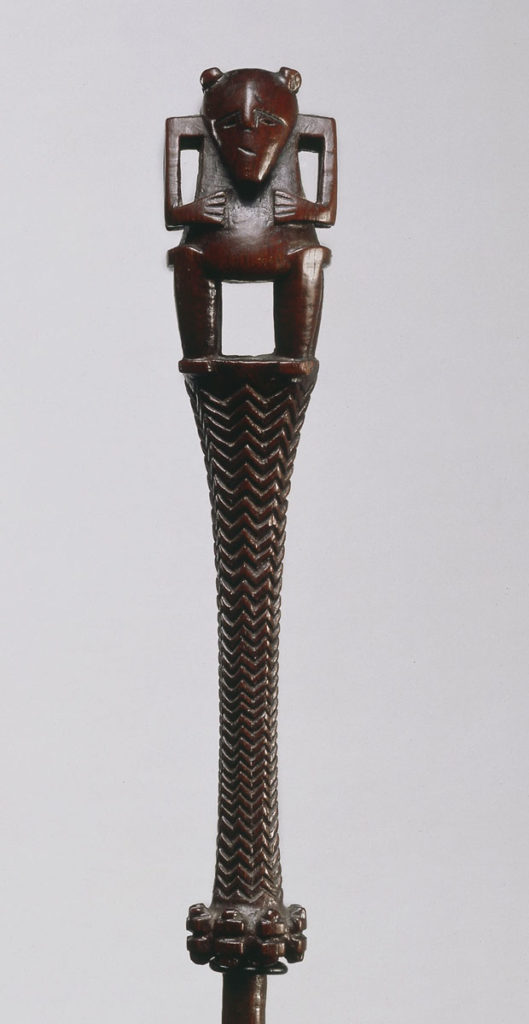Elegant fly whisks with handles terminating in double-figures were first collected by European voyagers in the eighteenth century. They were almost certainly made on Rurutu or Tubuai in the Austral Islands, or perhaps by Austral Islanders resident in the Society Islands. The form of the figures, with projections on their heads, and of the paired heads encircling the lower roundel, has parallels in other objects of undoubted Australs provenance.
The handle shown here formerly had a whisk of coconut-husk fibre bound to the lower shaft. In some examples small pieces of pearl shell remain attached to the whisk, which could also serve as a rattle.

Although we have no eyewitness accounts of their use, it is likely that whisks were valuable exchange items and were used by those of high status on ritual occasions. The presentation of faces or figures adossé, notable on Polynesian god images, weapons and batons of various kinds, may have been connected to a protective, all-seeing attribute of such images.
Communication of Jerome Feldman, 22 May 2020: Fly whisks are still used in Samoa as a signifier for one’s participation in formal oratory. When a speaker is involved he places the fly whisk on his shoulder. When speaking, he flaps it over his other shoulder. Chiefs have a fine elegant one and the talking chiefs have a bigger crude version. That may, or may not, have been the meaning in the Australs but it seems likely that it at least functioned as an emblem of rank or swagger.
You can also read about this objet in Sculpture, 1995
